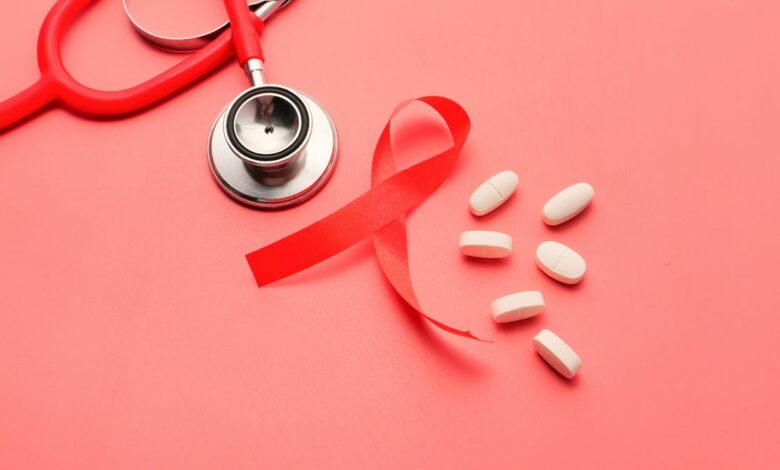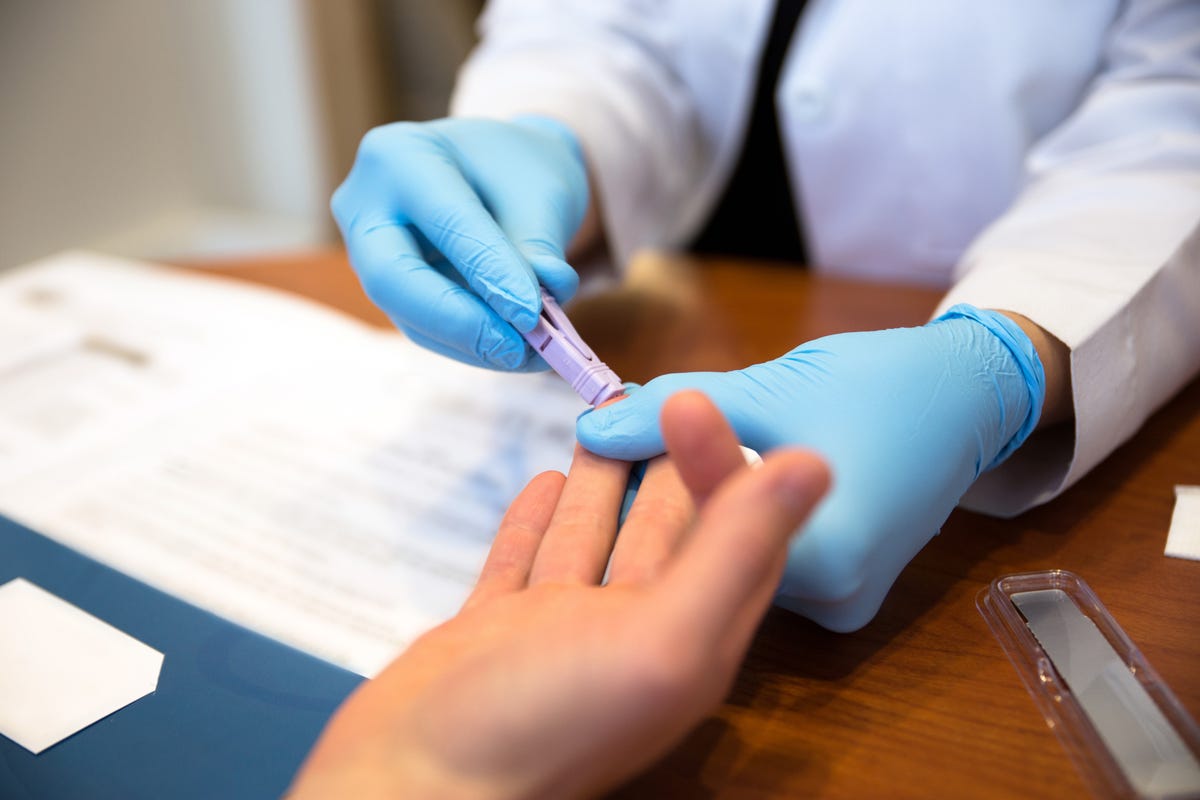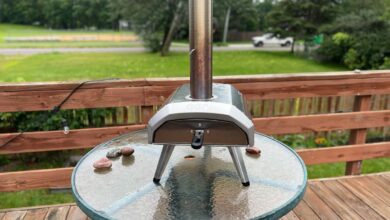HIV Testing: How to Get a Free Home HIV Test, Who Should Get One, and More


There are more ways to prevent and test for HIV than ever before. For people at higher risk of HIV, there is medication available (PrEP) that reduces the risk of this. Research is currently underway to find new and possibly more effective ways to reduce HIV transmission.
Promising results of a study published in the New England Journal of Medicine on Wednesday found that an injection given just twice a year significantly reduced the incidence of HIV among girls and women in South Africa and Uganda compared with background HIV incidence. None of the 2,134 study participants who took the drug under investigation (lenacapavir) developed HIV.
In addition to advances in preventive medicine, testing to find out your HIV status is key to taking control of your health. Being diagnosed with HIV today is not the same as it was years ago. By simply adhering to their medication plan, most people can get the virus down to undetectable levels, meaning there is no risk of infection. Current treatments mean that someone who tests positive for HIV can live a long life and keep the virus so undetectable that they will not pass it on to a sexual partner.
If you’ve taken a typical sex ed class, you’ve probably heard that it’s a good idea to check your HIV status at least once, regardless of individual factors that influence your risk of infection. But has that information changed since your last school days? Here’s what we now know about HIV testing and where you can get one.
Who needs an HIV test? How often should I get tested?
The US Centers for Disease Control and Prevention recommends That all people are tested for HIV at least once during their lifetime. However, many people are advised to test more often. How often you might benefit from testing is individual and depends on several factors, including your recent sexual history, your partners, what drugs you use, and more. Here are a few more specific recommendations:
If you are a man who has sex with men and you are not in a monogamous relationship where you both know your status: You should get tested for HIV at least once a year. Some sexually active gay or bisexual men may benefit from getting tested more often, such as every three or six months.
Like many viruses, HIV disproportionately affects certain populations. Gay, bisexual, and other men who have sex with men are at the highest risk of contracting HIV in the U.S., and are approximately 68% of new diagnoses in 2020. Black and Hispanic men are at greater risk.
If you have had more than one sexual partner since your last HIV test, the CDC recommends getting another one. You can get it at the same time as your test for other sexually transmitted infections, like chlamydia. In the same way, although a little bit in reverse, if you have been diagnosed with another STDyou should also be tested for HIV.
If you have exchanged drug equipment with another person, such as needles, syringes, or cooking utensils, you should get an HIV test. If you regularly share drug equipment, you should get tested for HIV at least once a year.
If you’ve traded sex for things like money, you should get an hiv test. If you do it regularly, you should get tested at least once a year (possibly every three monthsFor example).
If you have had sex with someone who has been recommended for testing based on the above criteria, or if you do not know that person’s sexual historythen you should have an HIV test done.
If you are pregnant, Your doctor will also likely recommend an HIV test early in your pregnancy. If someone who is HIV positive follows the guidelines they are given for their medication regimen during pregnancy and birth, they have a 99% chance of not Passing HIV to their baby, according to the American College of Obstetricians and Gynecologists.

There are several ways to get tested for HIV. They are all fairly quick.
Where can you get an HIV test?
HIV tests can be antibody, antigen/antibody, or lab-based (NAT) tests. Most rapid HIV tests are antibody tests, meaning they work by detecting antibodies that your body produces when you have HIV, either through blood or a cheek swab.
Health clinics such as Planned Parenthood offer HIV testing. You can also check in with your local health serviceas smaller clinics often offer discounts or even free testing if you are worried you can’t afford it. If you have a regular GP, they can also perform an HIV test for you.
If you prefer to test at home, you have options. The OraQuick In-Home HIV Test is an HIV test kit that requires a swab of your cheek — no blood involved. You can get your results in 20 minutes. You can get one or two OraQuick home HIV tests for free if you order via Together TakeMeHomeAn initiative by the CDC to increase HIV testing. And according to the website Together TakeMeHome, people in the U.S. and Puerto Rico can order every three months.
You can also buy OraQuick online for $39. If you get tested within three months of potentially being exposed to HIV, OraQuick recommends retest after three months, because there is a period in which the chance of false negative results is greater. (Read more about when to test below.)
There are other testing options, including mail-in HIV testing, where you take the test at home but send your sample to a lab for processing. Pharmacies such as CVS sells HIV testssometimes also in kits that test for other STDs.
The LetsGetChecked Standard 5 test, for example, screens for HIV but also common STDs such as chlamydia, gonorrhea, syphilis and trichomonas. You’ll need to prick your finger and provide a urine sample that you’ll send in for testing, and you should receive results within two to five days, the company says.
HIV tests are generally accurate if you follow the testing instructions, but if you get a positive result, contact your doctor to confirm the result and get next steps for treatment. If you test positive at your doctor’s office or clinic, your health care provider can perform a second test to confirm.
When should you get tested if you think you have been exposed to HIV?
If you’ve been exposed to HIV and do develop it, how quickly a test will turn positive depends on the type of test you take. It also varies a little from person to person. But it can take up to three months for a rapid test to detect HIV, because the body build up enough antibodies to make a test positive.
If you are looking for a accurate result in the fastest timeYou can ask your doctor for a nucleic acid test (NAT). This can detect the substance as early as 10 days after exposure, but it can take longer.
If you have been exposed and test negative, get tested again once the “window period” for whatever test you are using is over. For antibody tests, this means retesting after 90 days. For NAT tests, this means waiting 33 days. See the CDC’s window period for different HIV tests hereIf you think you have been exposed to HIV, you can also talk to your doctor or other healthcare provider so they can advise you on the best time to get tested, or refer you for testing.
If you test positive for HIVKnow that you are not alone and that with the medications available today, you can probably reduce the virus to undetectable levels. This means that your body has the virus under control and you cannot transmit it to your sexual partner.
According to the CDC, most people can achieve an undetectable viral load within six months from starting medication, as long as they take it as prescribed.
Find a list of some support groups for others with a positive HIV diagnosis here.




